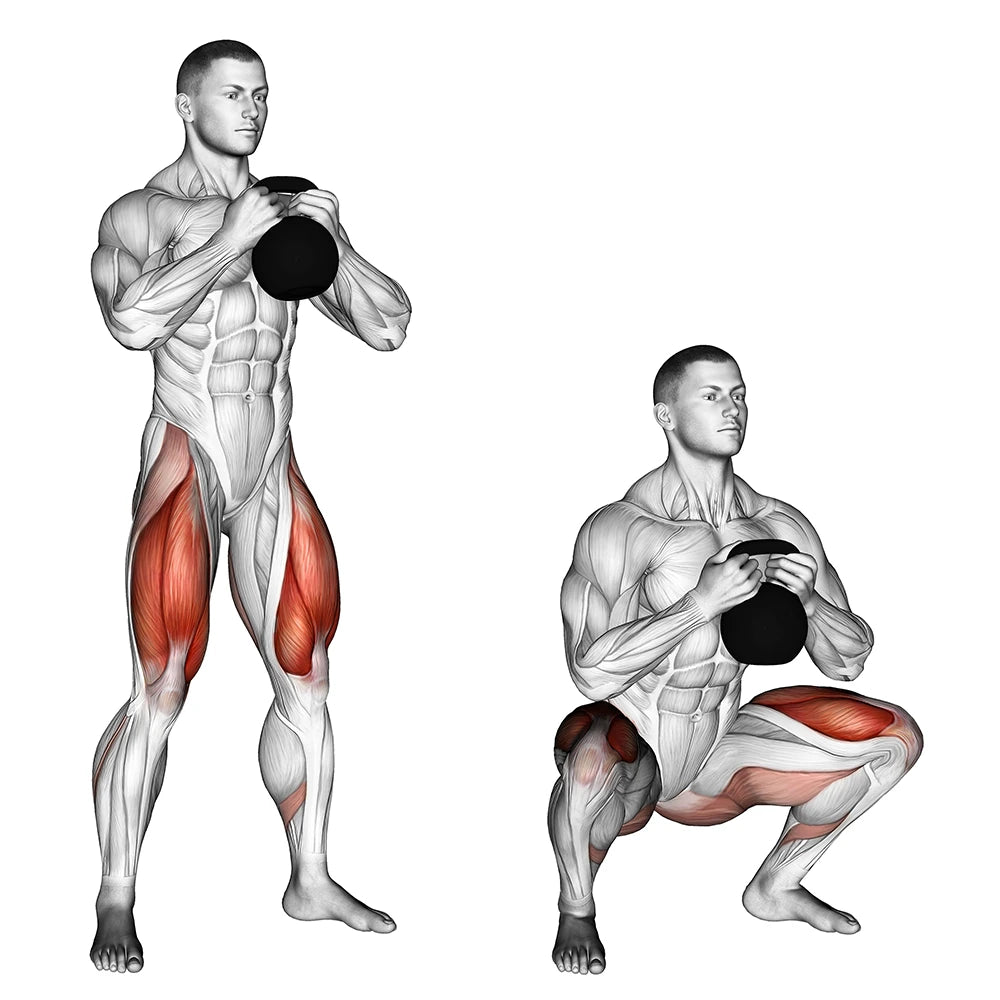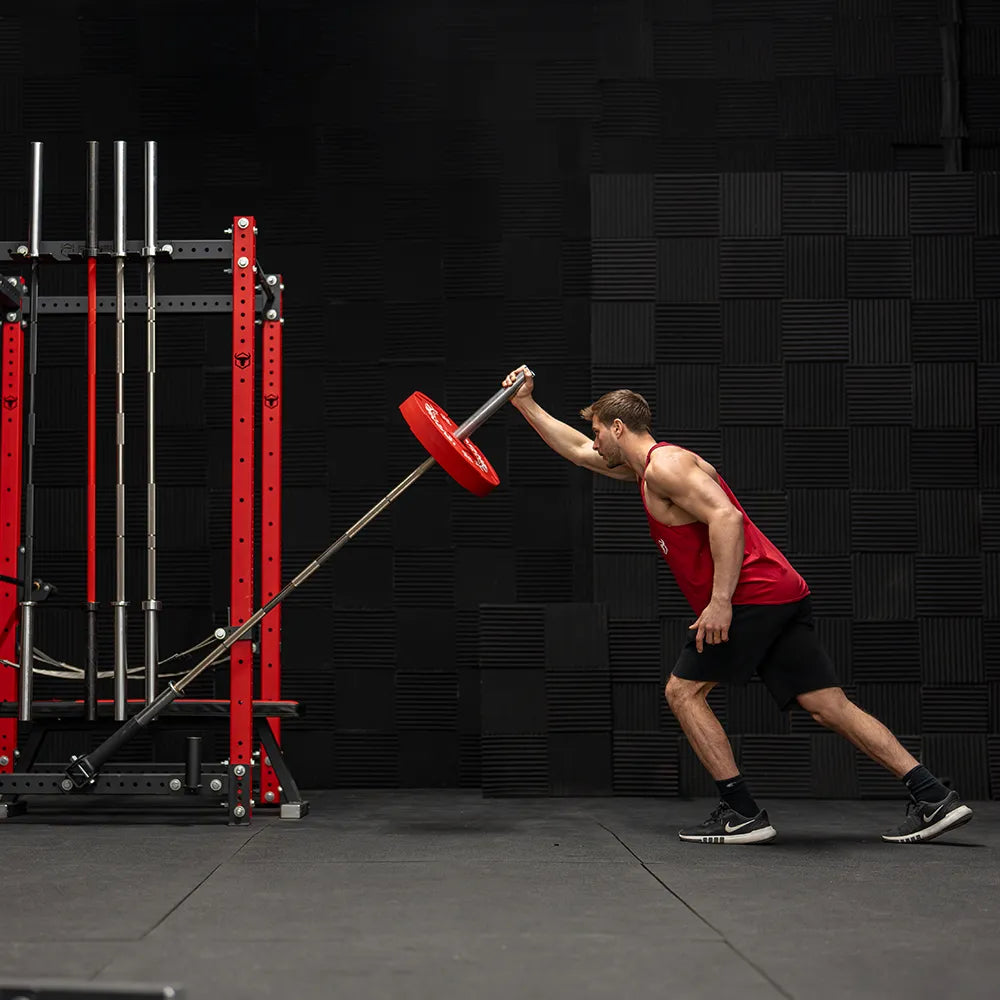Maîtriser le squat avec haltères : le dernier guide dont vous aurez besoin.

Maîtriser le squat avec barre
Le squat avec haltères est un exercice puissant qui donne du punch à tous ceux qui cherchent à développer une force sérieuse.
Il s’agit d’un exercice composé qui cible vos jambes, votre tronc et le bas du dos, ce qui en fait un élément de base de toute routine d’entraînement solide.
Si vous débutez , maîtriser la technique est essentiel pour gagner en force et en puissance. Il ne s'agit pas seulement d'avoir du style avec une barre . sur votre dos, il s'agit de le faire correctement.
Avant d'entrer dans le vif du sujet, parlons équipement. Un rack à squat est indispensable si vous prévoyez de soulever des charges lourdes.
Il offre le soutien et la stabilité dont vous avez besoin pour vous accroupir en toute sécurité et efficacement.
Se préparer au succès
Pour tirer le meilleur parti de votre squat, commencez avec vos pieds écartés à la largeur des épaules et vos orteils légèrement tournés vers l'extérieur. Cette position vous donne une base solide sur laquelle travailler .
L'étape suivante consiste à positionner la barre. Posez-la sur vos trapèzes ou vos épaules.
Pour la stabiliser, serrez vos omoplates. Cela permet d'éviter que la barre ne bouge pendant le squat.
Pour saisir la barre, enroulez vos pouces autour et contractez vos avant-bras. Cela soulage vos poignets et vous aide à garder le contrôle tout au long du mouvement.
Et n'oublions pas la barre elle-même. Une barre d’haltères de haute qualité spécialement conçue pour les squats peut faire toute la différence en termes de confort et de stabilité.
Exécution du squat : guide étape par étape
Commencez par retirer la barre du support. Essayez de ne faire qu'un ou deux pas pour économiser votre énergie et réaliser le squat lui-même .
En descendant, considérez cela comme un mouvement contrôlé. Commencez par une flexion de hanche, gardez la colonne vertébrale neutre et répartissez votre poids uniformément sur vos pieds : gros orteil, petit orteil et talon.
Gardez votre poitrine haute, votre tronc serré et vos yeux vers l’avant pour un meilleur contrôle.
Sur le chemin du retour, poussez sur vos talons, maintenez votre équilibre et serrez bien vos fessiers en haut.
La sécurité avant tout ! Les bras de repérage sont un atout précieux pour les charges lourdes.
Ils attraperont la barre si vous ne parvenez pas à terminer le squat.
Erreurs courantes et comment les éviter
Faire trop de pas lors de la marche est une erreur courante. Cela gaspille de l'énergie et peut perturber votre installation.
Si vous remarquez que votre poitrine s'affaisse, il est temps d'engager ces dorsaux . Cela ajoute de la stabilité et aide à vous protéger des blessures.
Lorsque vos talons commencent à décoller du sol, c'est le signe d'une mauvaise répartition du poids. Maintenez la pression sur vos talons pour maintenir l'équilibre et maximiser votre force.
Pour une meilleure stabilité du tronc, pensez à utiliser une ceinture d'haltérophilie . Elle peut contribuer à réduire les risques de tensions lombaires et à renforcer votre confiance lors des squats plus lourds.
Respiration et renforcement pour une stabilité maximale
Une respiration correcte est essentielle pour maintenir la stabilité et la force tout au long du squat.
Avant même de soulever la barre, prenez une grande inspiration et contractez votre ceinture abdominale. Cela vous permettra de réussir votre levée.
Lorsque la barre repose sur votre dos, expirez légèrement en contractant votre tronc. Cela empêche votre poitrine de s'affaisser.
En bas du squat, contractez à nouveau votre ceinture abdominale avant de pousser vers le haut. Cela garantit une ascension fluide et contrôlée.
Les genouillères de levage peuvent changer la donne. Elles offrent compression et soutien, protégeant vos genoux et améliorant leur stabilité.
Améliorer votre technique de squat
Faites attention à la pression de vos pieds. Gardez les talons au sol et répartissez votre poids uniformément sur vos pieds pour un meilleur équilibre.
Vos hanches et vos genoux doivent bouger ensemble. Cette coordination vous aide à maintenir une bonne posture et à éviter les tensions inutiles.
Il est essentiel de suivre vos progrès. Notez vos performances aux squats, vos gains de force et les points à améliorer pour les prochaines séances.
Pour ceux qui souhaitent améliorer leur jeu, pensez à des techniques avancées comme l'étirement préalable des quadriceps ou l'ancrage des hanches. Ces stratégies peuvent vous aider à développer votre force au fil du temps.
Et bien sûr, des disques de poids de qualité sont indispensables pour augmenter progressivement la charge et perfectionner votre technique.
Conclusion
Le squat avec barre est essentiel pour développer la force et la stabilité globales. Se concentrer sur la bonne posture, les techniques de respiration et la régularité permettra une amélioration durable.
Un power rack est un équipement polyvalent qui renforce la sécurité de votre installation. Il permet de réaliser des squats, des tractions et bien plus encore, ce qui en fait un atout précieux pour toute salle de sport à domicile.



